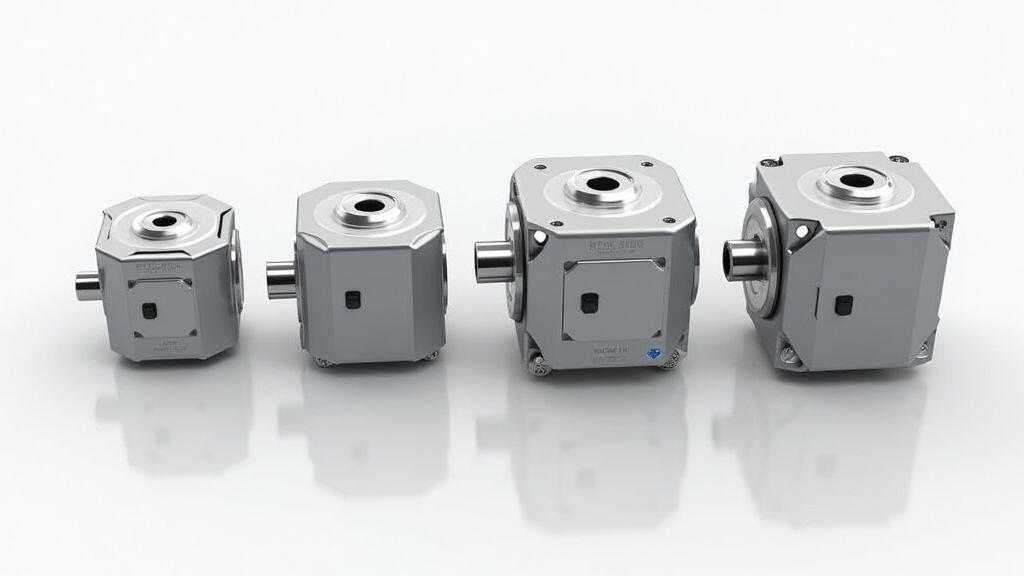Anjing Road, Xiaolan, Zhongshan, Guangdong, China
info@mes-drive.com
08.00 AM-09.00 PM

In the rapidly evolving landscape of logistics and material handling, efficiency and reliability are paramount. The smooth and consistent operation of conveyor systems and automated machinery hinges significantly on the performance of their power transmission components, particularly right-angle gear motors. Selecting the right gear motor isn't just about horsepower; it's about optimizing performance, minimizing downtime, and maximizing return on investment. This article delves into the critical selection points and calculation methods for right-angle gear motors specifically tailored to the demands of modern logistics operations, incorporating insights on energy efficiency – a key concern in today’s carbon-conscious world. We’ll also touch upon the increasing integration of these motors with IoT platforms for predictive maintenance, a burgeoning area gaining traction.
Right-angle gear motors are workhorses in logistics, offering a compact and efficient solution for converting high-speed, low-torque electric motor output into low-speed, high-torque output. This transformation is essential for powering various applications, including:
The increasing demand for automated warehouses and e-commerce fulfillment centers is driving a surge in the need for robust and dependable right-angle gear motors. The recent rise in online shopping, amplified by events like the pandemic-driven shift in consumer behavior, has placed unprecedented strain on logistics infrastructure, making efficient and reliable power transmission critical.
Choosing the right right-angle gear motor requires careful consideration of several factors. Here's a breakdown of the most important selection points:
Torque Requirements: This is the most fundamental factor. Accurately calculating the required torque is crucial to prevent motor overloading and premature failure. The torque needed depends on the load’s inertia, acceleration/deceleration requirements, and friction. Consider including a safety factor (typically 1.25 to 2x) to account for unexpected load variations and wear.
Speed Requirements: The input speed of the motor and the desired output speed of the driven equipment must be carefully matched. Right-angle gear motors provide a trade-off between speed reduction and torque increase.
Power Rating: The motor's power rating (typically in horsepower or kilowatts) should be sufficient to meet the torque and speed requirements. It's important to consider power efficiency, especially with rising energy costs and environmental concerns.
Gear Ratio: The gear ratio determines the extent of speed reduction and torque multiplication. Higher gear ratios result in lower output speeds and higher output torques.
Efficiency: Higher efficiency translates to lower energy consumption and reduced operating costs. Look for motors with high efficiency ratings (e.g., IE3 or IE4 standards). Many manufacturers, including MES-Drive, are focusing on developing premium efficiency motors to address this need.
Duty Cycle: The duty cycle describes the percentage of time the motor is expected to operate. Continuous duty motors are designed to operate without overheating, while intermittent duty motors are suitable for applications with short operating intervals.
Environmental Conditions: Consider the operating environment (temperature, humidity, dust, etc.) and choose a motor with appropriate protection (e.g., IP rating). IP65 or higher is often recommended for industrial environments.
Mounting Style: Ensure the motor mounting style is compatible with the available space and mounting requirements.
Size and Weight: In confined spaces, the physical dimensions of the motor can be a limiting factor.

Accurate torque calculation is paramount for selecting the right motor and gear ratio. Here's a simplified approach:
Calculate the Load Torque (TL): This is the torque required to overcome the load's inertia and friction.
TI = Moment of Inertia (J) * Angular Acceleration (α)TF = Coefficient of Friction (μ) * Normal Force (N) * Radius of Contact (r)Account for Safety Factor: Multiply the total load torque by a safety factor (1.25 - 2.0) to account for variations, wear, and unexpected loads.
Determine Required Motor Torque (TM): The required motor torque should be greater than or equal to the adjusted load torque.
Calculate the Required Gear Ratio: Gear Ratio = Motor Speed / Output Speed
Check Motor Power: Ensure the motor's power rating is sufficient to deliver the required torque at the desired speed. Consider the motor's efficiency when calculating power requirements.
For more complex applications, using simulation software and consulting with gear motor specialists is highly recommended. MES-Drive offers in-depth application engineering support to assist with these calculations.
The integration of right-angle gear motors with Internet of Things (IoT) platforms is revolutionizing maintenance practices. IoT sensors can monitor parameters such as motor temperature, vibration, and current draw. This data can be analyzed to predict potential failures and schedule maintenance proactively, minimizing downtime and maximizing equipment lifespan. Predictive maintenance, fueled by data analytics, is becoming increasingly essential for maintaining operational efficiency in demanding logistics environments. The ability to remotely monitor motor health allows for preventative actions, aligning perfectly with the trend towards smart warehousing and supply chain management.

Right-angle gear motors are indispensable components of modern logistics and conveying systems. Selecting the right motor requires a comprehensive understanding of application requirements, careful torque and speed calculations, and consideration of factors such as efficiency, environmental conditions, and duty cycle. The increasing integration of IoT and predictive maintenance technologies is further enhancing the reliability and efficiency of these motors. As the logistics industry continues to evolve, driven by e-commerce growth and automation initiatives, the demand for high-performance, reliable right-angle gear motors, particularly those offered by companies like MES-Drive, will only continue to increase. By understanding the selection points and calculation methods outlined in this article, businesses can optimize their power transmission systems, minimize downtime, and maximize their return on investment, ensuring a seamless and efficient flow of goods. The convergence of efficient motor technology and smart data analytics sets the stage for a more resilient and agile logistics landscape, better equipped to meet the challenges of the future.
Leave A Reply
Your email address will not be published. Required fiels are marked